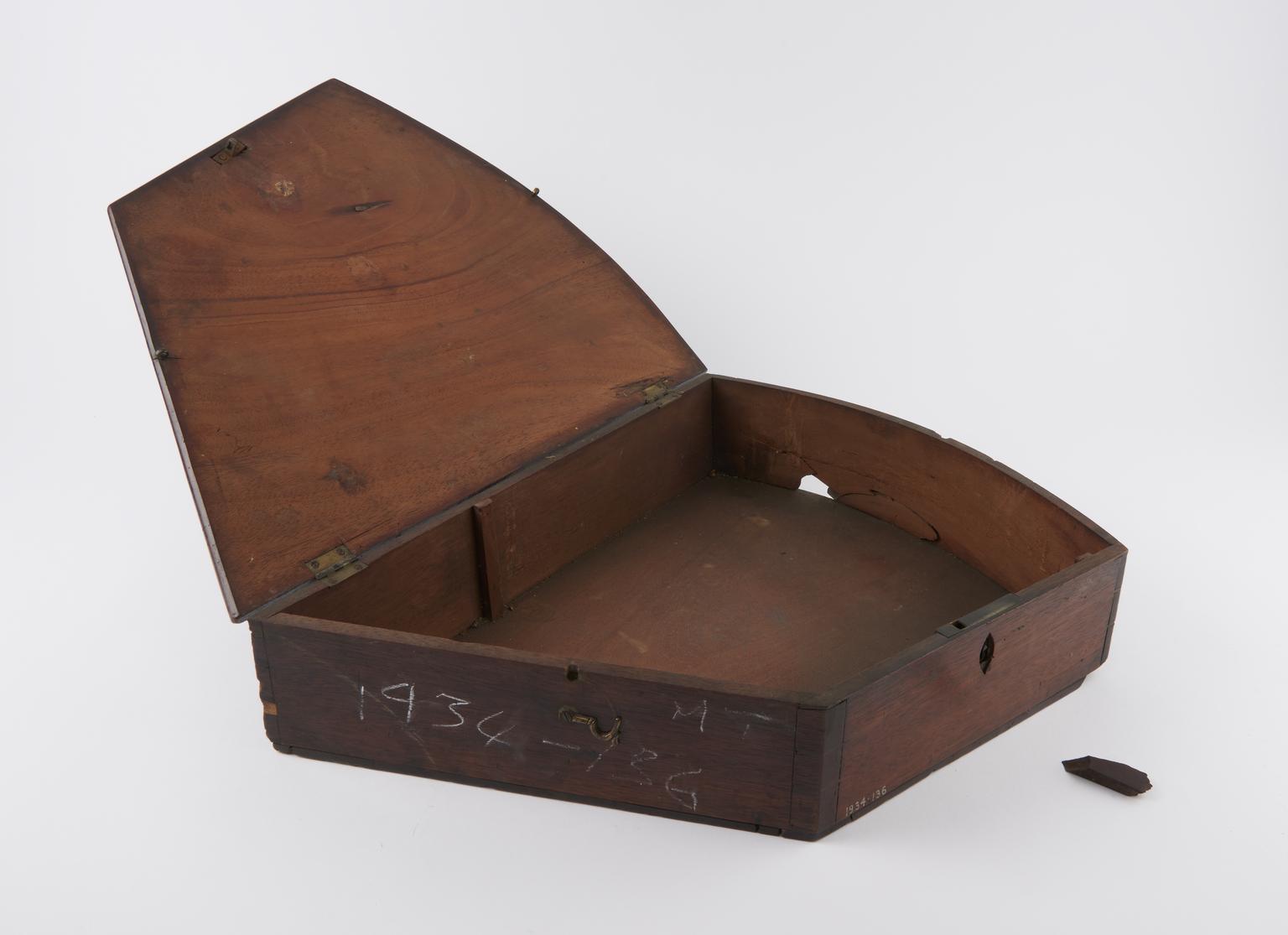
Carrying case for brass framed octant fitted with bubble artificial horizon.
Carrying case for octant with an artificial horizon patented by John Syeds, London, about 1791.
Octant with an artificial horizon patented by John Syeds, London, about 1791, and possibly made by him. Lacquered brass frame, a polished brass limb. Marked on the frame: Ino Seyds | Patentee No 12. Marked on the brass case of the artificial horizon: Iohn Seyds's Patent. Brass scale from -2° to 99° every 20', measuring to 99°. Brass vernier to 1', zero at the right. There is no tangent screw; the clamping screw is on the back of the index arm. No shades found, but holes in the frame suggest there may have been index shades. Index-glass adjustment by screw; adjustment of the horizon glass by a lever, wing nut and a milled clamping screw. Adjustment of the third glass, for reflecting the bubble of the artificial horizon, is by lever, wing nut and milled clamping screw. Sight vane with two pinholes and a swivelling shutter; the vane can be moved along the right strut of the frame over a short distance by a milled screw, and clamped into position by a second milled screw. The horizontal position of the brass case containing the bubble level can be adjusted along the left strut of the octant frame by a milled screw, and clamped into position by a second milled screw.
The artifical horizon consists of a bubble level that, when the instrument is held vertically, is reflected by the third glass into the silvered part of the horizon glass, when the horizon is not visible.
in box... not seen, WMB

Carrying case for octant with an artificial horizon patented by John Syeds, London, about 1791.

Brass framed octant fitted with bubble artificial horizon